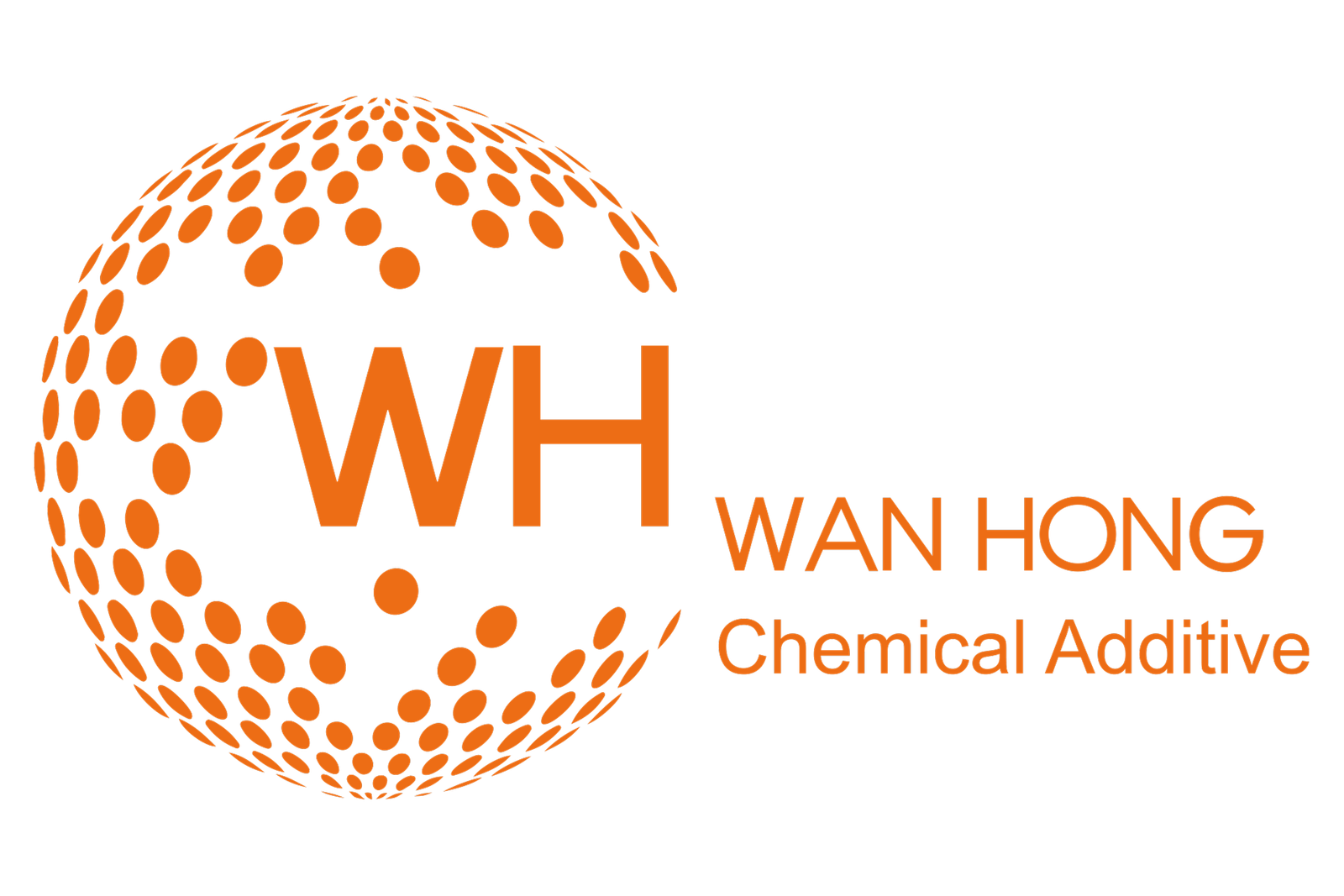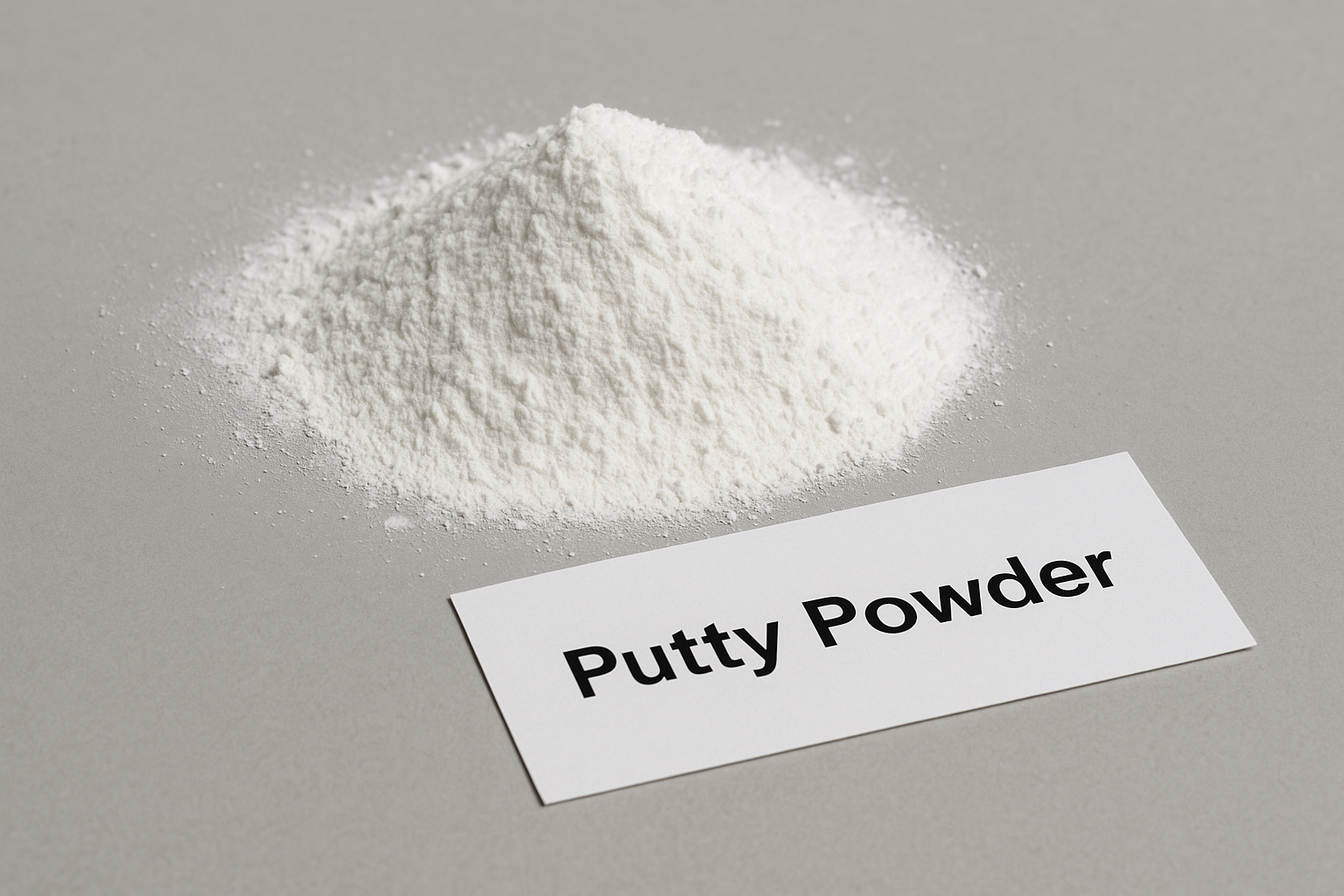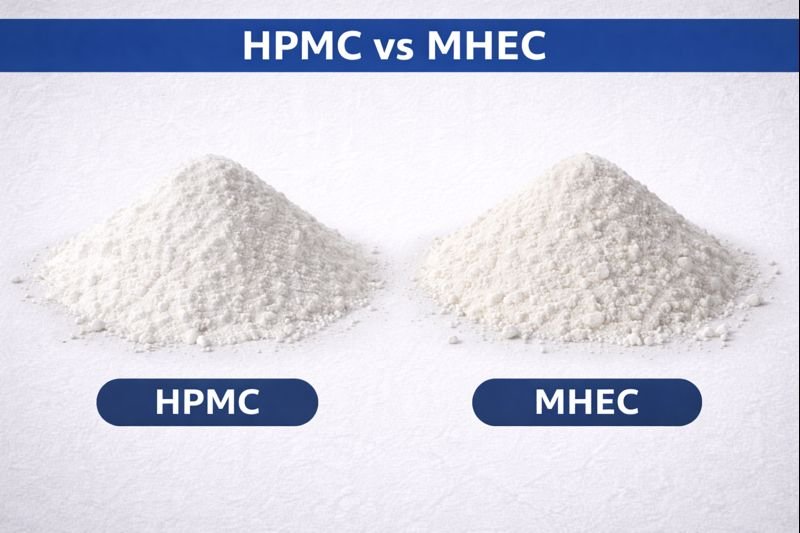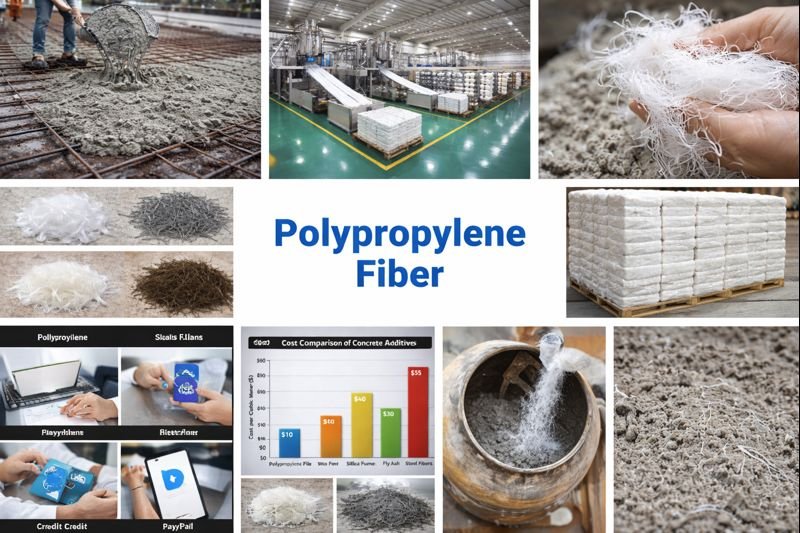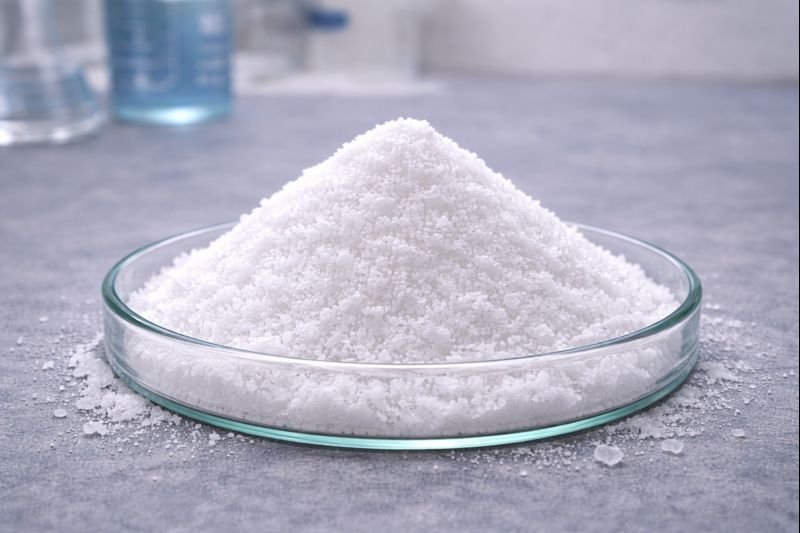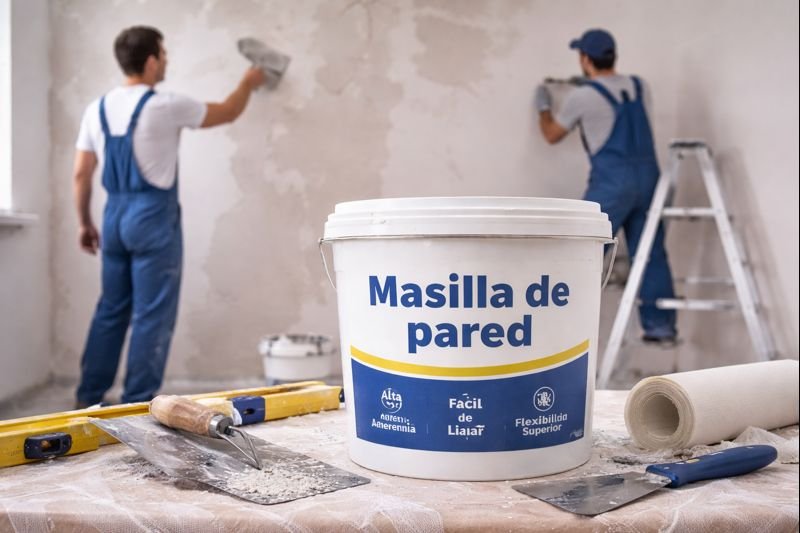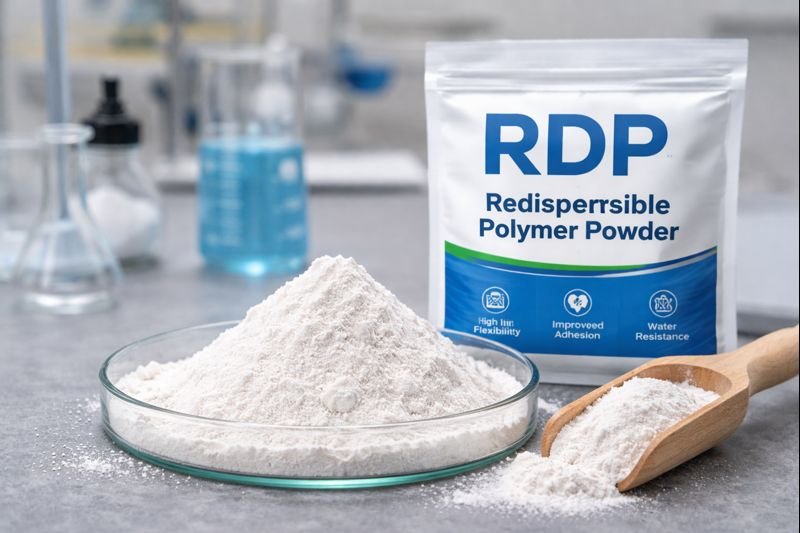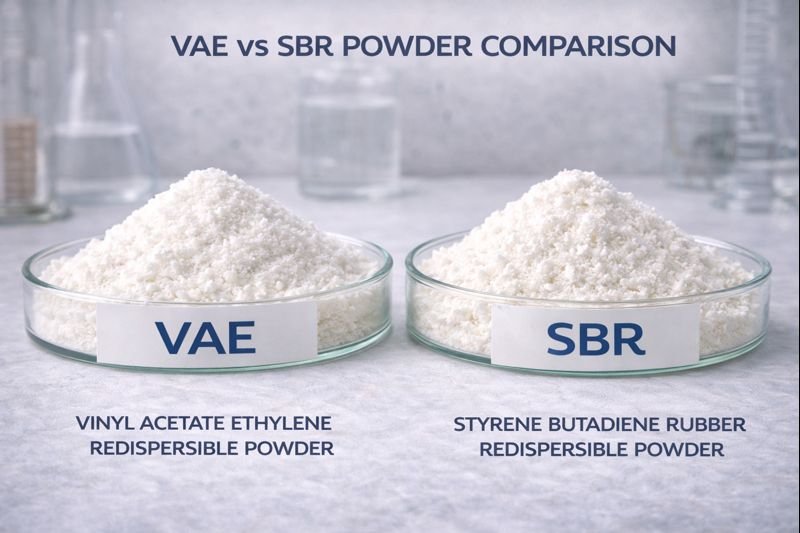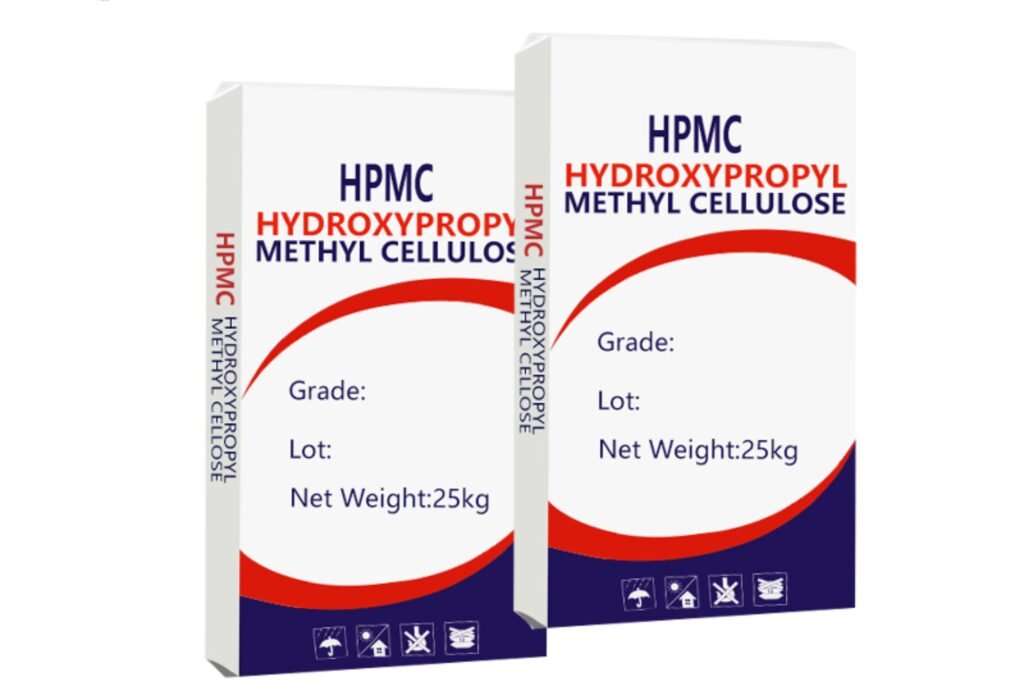Wall cracks are a homeowner's nightmare, causing both structural concerns and aesthetic problems. These unsightly lines not only ruin your beautiful paintwork but might signal deeper issues that need immediate attention.
Wall cracks1 occur due to structural movement, temperature fluctuations, moisture changes, poor construction techniques, or aging materials. They range from hairline surface cracks to deep structural fissures, with each type requiring a specific repair approach.
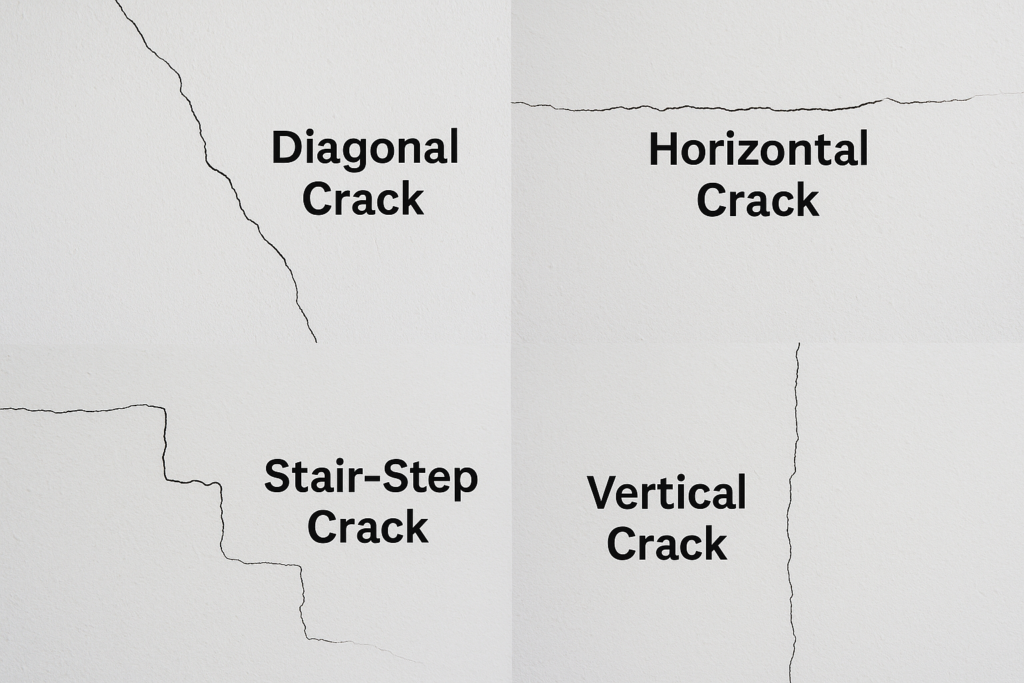
As a manufacturer with over 15 years in the construction materials industry, I've visited countless construction sites where cracks have caused significant delays and budget overruns. The good news is that with the right understanding and materials, most wall crack issues can be effectively addressed. Let me share the insights I've gathered from working with contractors and engineers around the world.
What Types of Cracks Appear in Walls?
Homeowners often panic when they spot a crack, not knowing if it's harmless or a sign of serious structural damage. I remember visiting a client in Dubai who was ready to demolish an entire wall over what turned out to be simple settlement cracks.
Wall cracks1 come in five main types: hairline cracks (less than 0.1mm wide), settlement cracks (diagonal, appearing after construction), structural cracks (wider than 3mm, often horizontal), shrinkage cracks (typically in concrete during curing), and thermal expansion cracks (from temperature fluctuations).
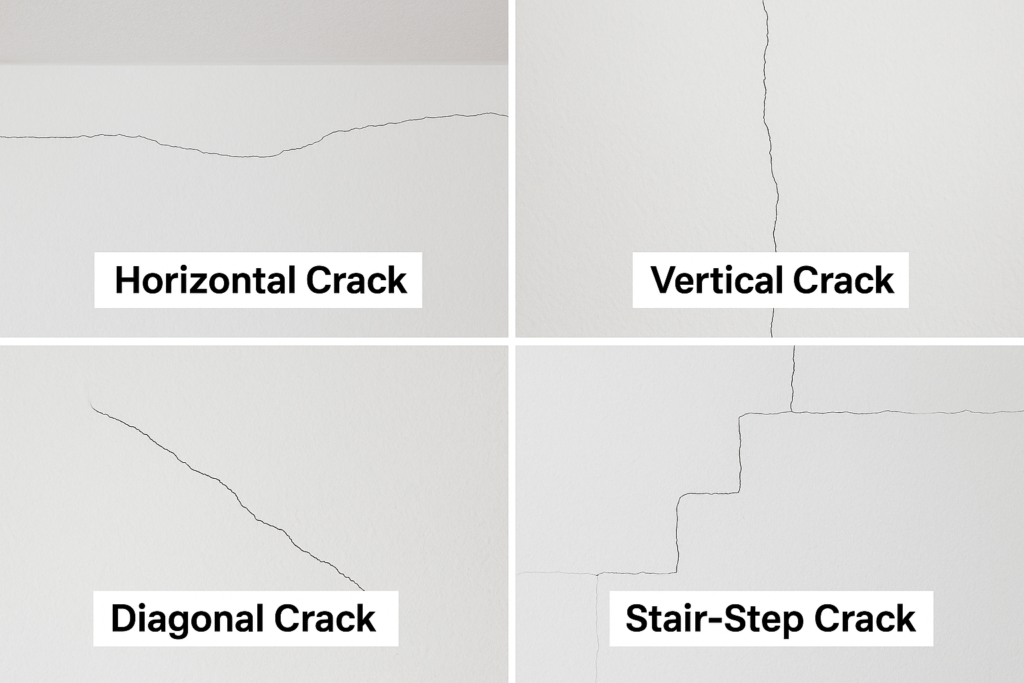
Understanding crack types is crucial for proper treatment. During my factory tours with clients, I always emphasize that correct identification saves both time and resources. Hairline cracks, while unsightly, are mostly cosmetic and require simple treatments. Settlement cracks frequently appear in new buildings as structures settle into their foundations - a natural process that typically stabilizes after 2-3 years.
Structural cracks are the most concerning and often indicate foundation problems or significant load-bearing issues. These require professional assessment, as they may compromise building safety. Shrinkage cracks commonly form during the concrete curing process as water evaporates and the material contracts. Thermal expansion cracks occur in regions with extreme temperature variations, where materials expand and contract cyclically.
Each crack type has distinct characteristics:
| Crack Type | Width | Pattern | Cause | Risk Level |
|---|---|---|---|---|
| Hairline | <0.1mm | Random, fine | Surface tension | Low |
| Settlement | 1-2mm | Diagonal, stair-step | Foundation settling | Moderate |
| Structural | >3mm | Horizontal/vertical | Structural failure | High |
| Shrinkage | 0.5-2mm | Map-like pattern | Material drying | Low to moderate |
| Thermal | 1-3mm | Straight, consistent | Temperature changes | Moderate |
What are the Causes of Cracks in Walls?
When customers call me about persistent wall cracks, they're often frustrated by recurring problems despite multiple repair attempts. This usually happens because they've treated the symptom, not the cause.
Wall cracks1 primarily develop from foundation movement, thermal expansion and contraction, excessive moisture fluctuations, improper construction methods, and natural building material aging. Identifying the root cause is essential for selecting the appropriate repair solution.
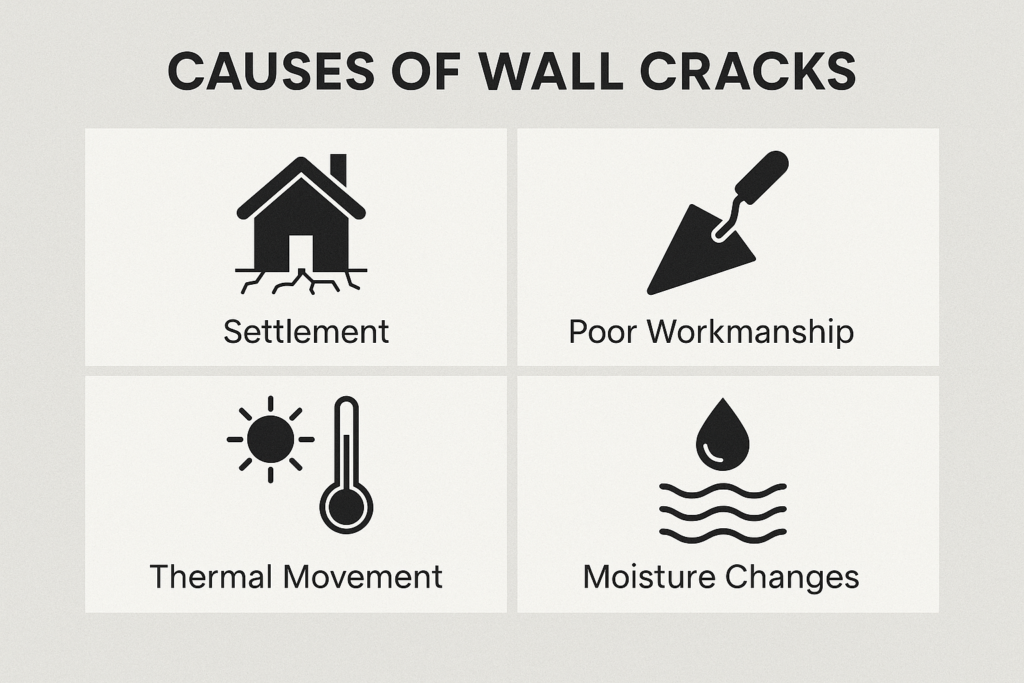
Foundation movement represents one of the most serious causes of wall cracking. During my visit to a large construction project in Saudi Arabia last year, I observed how unstable soil conditions had created significant foundation shifts, resulting in extensive wall damage throughout the structure. Poor soil compaction, erosion, or nearby construction can all trigger foundation movement.
Thermal expansion and contraction create immense pressure on building materials. In areas with extreme temperature variations, materials expand during hot days and contract during cold nights, eventually leading to stress cracks. I've seen this problem extensively in desert regions where daytime temperatures soar and nighttime temperatures drop dramatically.
Moisture fluctuations also contribute significantly to wall cracking. When building materials absorb water, they expand; when they dry out, they contract. This cyclical process creates internal stress that eventually manifests as cracks. During the rainy season in Southeast Asia, we typically see an increase in customer inquiries about moisture-related cracks.
Construction defects represent preventable causes of wall cracks. Improper mixing ratios in mortar or concrete, insufficient curing time, or inadequate structural support can all lead to premature cracking. At our facility, we conduct regular training sessions for contractors to help them avoid these common mistakes.
Natural aging affects all building materials. Over time, even the highest quality materials experience degradation from exposure to elements, resulting in reduced elasticity and increased brittleness. This natural process accelerates in harsh environments but is inevitable in all structures.
How to Fix Wall Cracks?
Many DIY enthusiasts make the costly mistake of using standard fillers for all cracks. After visiting a customer in Brazil who had repaired the same crack six times in two years, I realized how common this error is.
To properly fix wall cracks, first identify the crack type and cause, then choose appropriate materials. For hairline cracks, flexible acrylic fillers work well. For structural cracks, epoxy injections provide strength. For recurring cracks due to movement, flexible putty with HPMC additives2 offers lasting solutions.
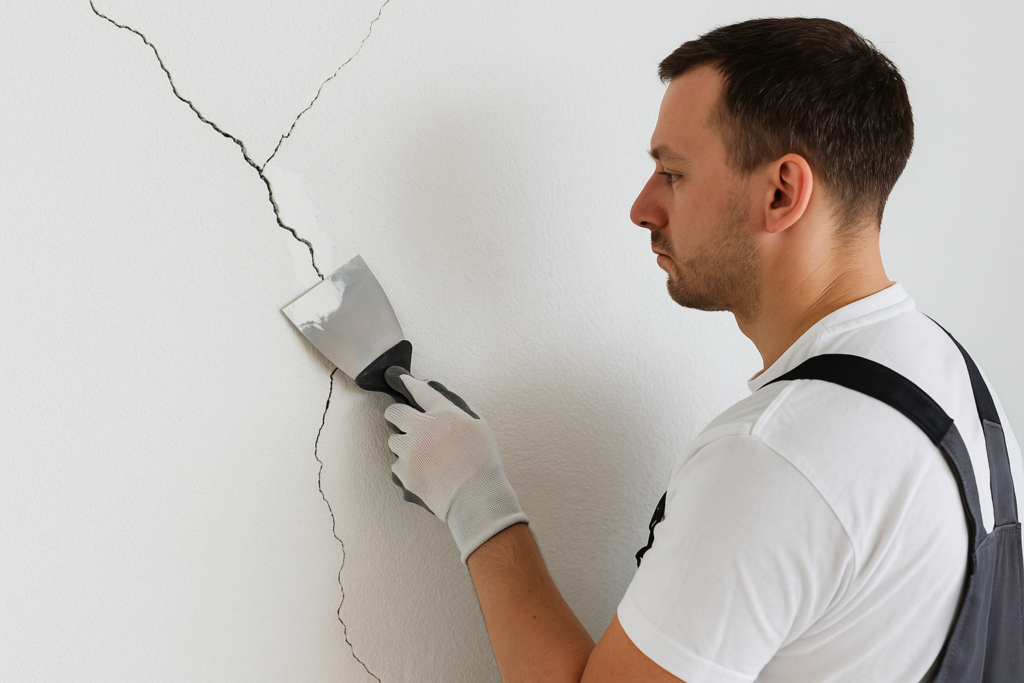
The repair process always begins with proper preparation. I advise our clients to follow a systematic approach that includes thorough cleaning, proper priming, and appropriate material selection. First, widen the crack slightly using a scraper or chisel to create a "V" shaped channel. This provides better adhesion for the repair material. Next, remove all dust, loose particles, and contaminants using a brush or vacuum, as these can prevent proper adhesion.
For minor cosmetic cracks under 0.5mm wide, flexible acrylic fillers provide excellent results. These materials offer good elasticity and can be painted over within hours. Medium-sized cracks (0.5-3mm) typically require more robust solutions like vinyl patching compounds enhanced with reinforcing fibers. For large or structural cracks exceeding 3mm, professional-grade epoxy or polyurethane injections provide the necessary strength and stability.
Recurring cracks present a special challenge, as they indicate ongoing movement. In these cases, the repair material must accommodate this movement while maintaining its integrity. This is where flexible putty formulations containing hydroxypropyl methylcellulose (HPMC) excel. The HPMC enhances workability during application and promotes excellent adhesion to the substrate while maintaining flexibility after curing.
For optimal results, I recommend this repair sequence:
- Diagnose crack type and cause
- Remove loose material and clean thoroughly
- Prime the crack surface if needed
- Apply appropriate filler material in thin layers
- Allow proper curing time between layers
- Sand smooth and finish with compatible paint
Professional assessment is essential for structural cracks, as these may indicate serious building integrity issues requiring specialized intervention beyond simple filling techniques.
How Does Flexible Putty Protect Walls from Cracking?
Traditional cement-based putties often fail because they're too rigid to handle building movement. I learned this lesson early in my career when a major hotel project had to redo all wall finishes due to rigid putty failure.
Flexible putty protects walls from cracking through its elastic properties that accommodate structural movement, thermal expansion, and contraction. Unlike rigid fillers that break under stress, flexible putty with HPMC additives2 maintains integrity while moving with the building, providing long-lasting protection.

The key advantage of flexible putty lies in its ability to absorb movement without breaking. During my visits to construction sites across different climate zones, I've observed how buildings constantly shift in subtle ways - expanding in heat, contracting in cold, settling over time, and responding to moisture changes. Traditional rigid putties simply can't handle these natural movements, leading to premature failure and recurring cracks.
Flexible putty creates a dynamic bridge across potential crack zones, allowing microscopic movements while maintaining surface integrity. This is particularly valuable in new construction where settlement is expected, or in regions with significant temperature variations. The elasticity comes from carefully formulated polymer modifications that transform conventional brittle putty into a resilient material.
Beyond crack prevention, flexible putty offers additional benefits that standard fillers don't provide. It typically features superior adhesion to various substrates including concrete, plaster, gypsum board, and wood. This versatility makes it suitable for nearly any interior wall surface. The material also tends to shrink less during curing, reducing the need for multiple application coats.
Our laboratory testing demonstrates that quality flexible putty can accommodate movements of up to 5-7% of its width without cracking. This seemingly small percentage makes an enormous difference in real-world applications, where even minimal movement can cause rigid fillers to fail completely.
Another significant benefit is reduced preparation time. Because flexible putty bonds well to slightly irregular surfaces, it often requires less aggressive substrate preparation than traditional fillers. This translates to faster application and lower labor costs, benefits our customers consistently report after switching to flexible formulations.
What Goes Into a Flexible Putty Formulation?
During factory tours, customers are often surprised by the sophisticated science behind flexible putty. What looks simple actually contains carefully balanced ingredients working together to create the perfect properties.
High-quality flexible putty formulations contain precise ratios of polymeric binders, premium grade HPMC (hydroxypropyl methylcellulose), fine calcium carbonate, reinforcing fibers, and specialized additives. The HPMC component is critical, providing water retention, workability, and contributing to the final flexibility.
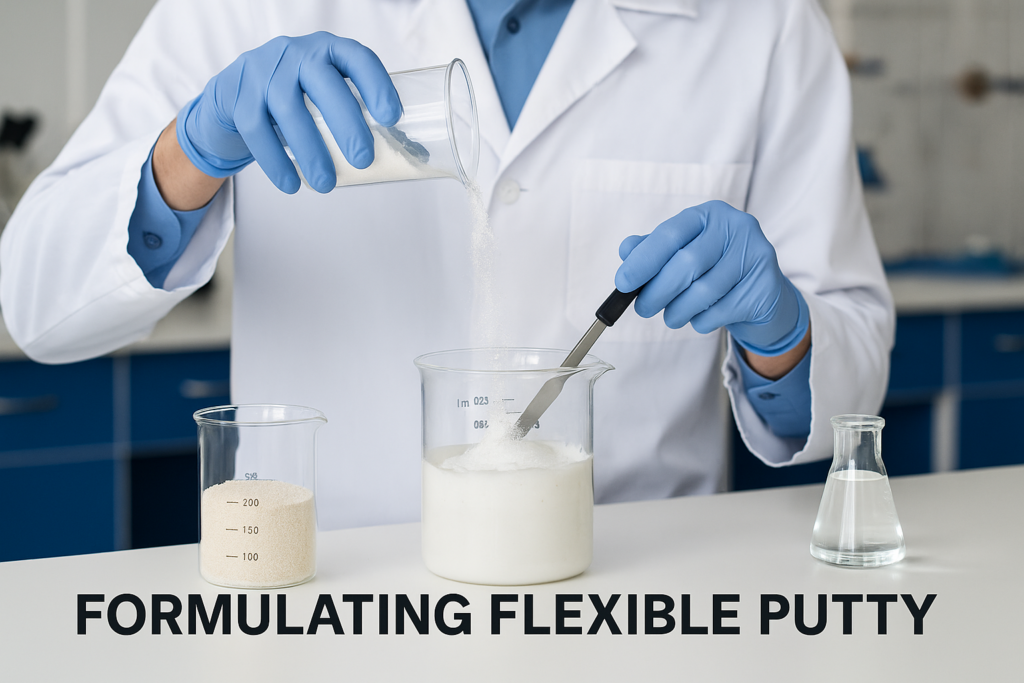
The heart of any flexible putty lies in its binder system. Unlike conventional putties that rely solely on cementitious materials, flexible formulations incorporate significant amounts of polymeric binders - typically acrylic, styrene-acrylic, or vinyl acetate-ethylene (VAE) based. These polymers create microscopic elastic bridges throughout the material, allowing it to stretch and recover without breaking.
HPMC (hydroxypropyl methylcellulose) plays several crucial roles in the formulation. First, it provides excellent water retention, preventing premature drying that can lead to cracking during the application and curing phases. Second, it enhances workability, making the putty easier to apply smoothly. Third, it contributes to the overall flexibility of the cured material through its film-forming properties. Our factory produces premium HPMC specifically engineered for construction applications, with molecular weight and substitution degrees optimized for putty formulations.
The mineral component typically consists of finely ground calcium carbonate (limestone) with carefully controlled particle size distribution. This provides body to the putty while minimizing weight and shrinkage. In premium formulations, the calcium carbonate undergoes surface treatment to improve its compatibility with the polymeric components.
Reinforcing fibers, though present in small quantities (typically 0.1-0.3% by weight), significantly enhance crack resistance. These may include cellulosic, polyamide, or polypropylene fibers that create a three-dimensional reinforcement network throughout the putty matrix. During my product development work, we found that combining different fiber types provides superior performance compared to single-fiber systems.
A well-formulated flexible putty also contains specialized additives:
| Additive Type | Function | Typical Dosage |
|---|---|---|
| Thickeners | Control rheology and sag resistance | 0.2-0.5% |
| Dispersants | Ensure uniform distribution of particles | 0.3-0.6% |
| Defoamers | Eliminate air bubbles during mixing | 0.1-0.2% |
| Biocides | Prevent bacterial/fungal growth | 0.05-0.1% |
| pH Regulators | Optimize curing conditions | 0.1-0.3% |
The precise balance of these components determines the putty's performance characteristics, including working time, flexibility, adhesion strength, and durability.
Conclusion
Wall cracks1 stem from natural building movement, but using flexible putty with quality HPMC additives offers a lasting solution. By choosing the right products and application techniques, you can effectively protect your walls while extending the life of your building's finish.
